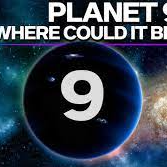Planet 9 Existence Something Is Moving

About
Universe secrets revealed!!
China
Description
Among the planetary group's additional fascinating secrets is whether an enormous, cold planet lives in the external areas of our vast area, past the circle of Neptune. This theoretical world, nicknamed "Planet Nine" by a portion of the researchers looking for it, has worked up discussion since it was first proposed.
Presently, that's what another examination predicts assuming it's out there, that lurking planet could be nearer, more brilliant, and simpler to detect than recently assessed.
Rather than circling our home star once like clockwork, cosmologists ascertain that it circles around the sun in around 7,400 years. That more tight circle carries it a lot nearer to the sun than recently expected, and that implies that Planet Nine might seem more splendid to Earth-based telescopes.
Finding Planet Nine
The way that researchers haven't yet seen Planet Nine could propose that assuming it exists, the world is situated close to the farthest reaches of its circle, making it a weak, gradually moving objective that is concealing in starlight. Brown and Batygin, in addition to Sheppard and Trujillo, are utilizing the strong Subaru telescope arranged on Hawaii's Mauna Kea to chase after the slippery planet. Be that as it may, even with the most keen apparatuses in space experts' weapons store, the inquiry is testing.
At its derived brilliance and circle, Planet Nine awkwardly mixes into the sparkling masses of foundation stars — a world afloat in the midst of the smooth decoration of our system in the evening time sky.
"It's adequately splendid and sufficiently close and unmistakable enough that that is fundamentally the main locale where it could hide undetected," Laughlin says. "That's what my sense is assuming it's there, it will be nailed down before long."
Filtering through starfields utilizing Subaru isn't the main way stargazers could nail the planet to the sky. NASA's Transiting Exoplanet Survey Satellite (TESS), which is caught up with looking for planets circling different stars, may see Planet Nine as it checks regions that incorporate the planet's alleged circle.
In 2019, cosmologists proposed that sharp information handling could pull distant nearby planet group objects from TESS perceptions — a method that Laughlin and Yale University's Malena Rice are right now dealing with.
"I'm not putting super-high chances on this, but rather it's in no way, shape or form unimaginable that TESS edges could uncover an article assuming it's there," Laughlin says. "Sometimes, something so astonishing that it regularly doesn't work out, occurs."
Numerous cosmologists concur that planet trackers' most probable possibility finding Planet Nine is the Vera Rubin Observatory, presently under development on a Chilean mountain ridge. This 8.4-meter telescope with a huge field of view will photo the whole noticeable sky like clockwork. Beginning in 2023, the observatory will allow cosmologists to follow the developments o
About
Universe secrets revealed!!
China
Description
Among the planetary group's additional fascinating secrets is whether an enormous, cold planet lives in the external areas of our vast area, past the circle of Neptune. This theoretical world, nicknamed "Planet Nine" by a portion of the researchers looking for it, has worked up discussion since it was first proposed.
Presently, that's what another examination predicts assuming it's out there, that lurking planet could be nearer, more brilliant, and simpler to detect than recently assessed.
Rather than circling our home star once like clockwork, cosmologists ascertain that it circles around the sun in around 7,400 years. That more tight circle carries it a lot nearer to the sun than recently expected, and that implies that Planet Nine might seem more splendid to Earth-based telescopes.
Finding Planet Nine
The way that researchers haven't yet seen Planet Nine could propose that assuming it exists, the world is situated close to the farthest reaches of its circle, making it a weak, gradually moving objective that is concealing in starlight. Brown and Batygin, in addition to Sheppard and Trujillo, are utilizing the strong Subaru telescope arranged on Hawaii's Mauna Kea to chase after the slippery planet. Be that as it may, even with the most keen apparatuses in space experts' weapons store, the inquiry is testing.
At its derived brilliance and circle, Planet Nine awkwardly mixes into the sparkling masses of foundation stars — a world afloat in the midst of the smooth decoration of our system in the evening time sky.
"It's adequately splendid and sufficiently close and unmistakable enough that that is fundamentally the main locale where it could hide undetected," Laughlin says. "That's what my sense is assuming it's there, it will be nailed down before long."
Filtering through starfields utilizing Subaru isn't the main way stargazers could nail the planet to the sky. NASA's Transiting Exoplanet Survey Satellite (TESS), which is caught up with looking for planets circling different stars, may see Planet Nine as it checks regions that incorporate the planet's alleged circle.
In 2019, cosmologists proposed that sharp information handling could pull distant nearby planet group objects from TESS perceptions — a method that Laughlin and Yale University's Malena Rice are right now dealing with.
"I'm not putting super-high chances on this, but rather it's in no way, shape or form unimaginable that TESS edges could uncover an article assuming it's there," Laughlin says. "Sometimes, something so astonishing that it regularly doesn't work out, occurs."
Numerous cosmologists concur that planet trackers' most probable possibility finding Planet Nine is the Vera Rubin Observatory, presently under development on a Chilean mountain ridge. This 8.4-meter telescope with a huge field of view will photo the whole noticeable sky like clockwork. Beginning in 2023, the observatory will allow cosmologists to follow the developments o
